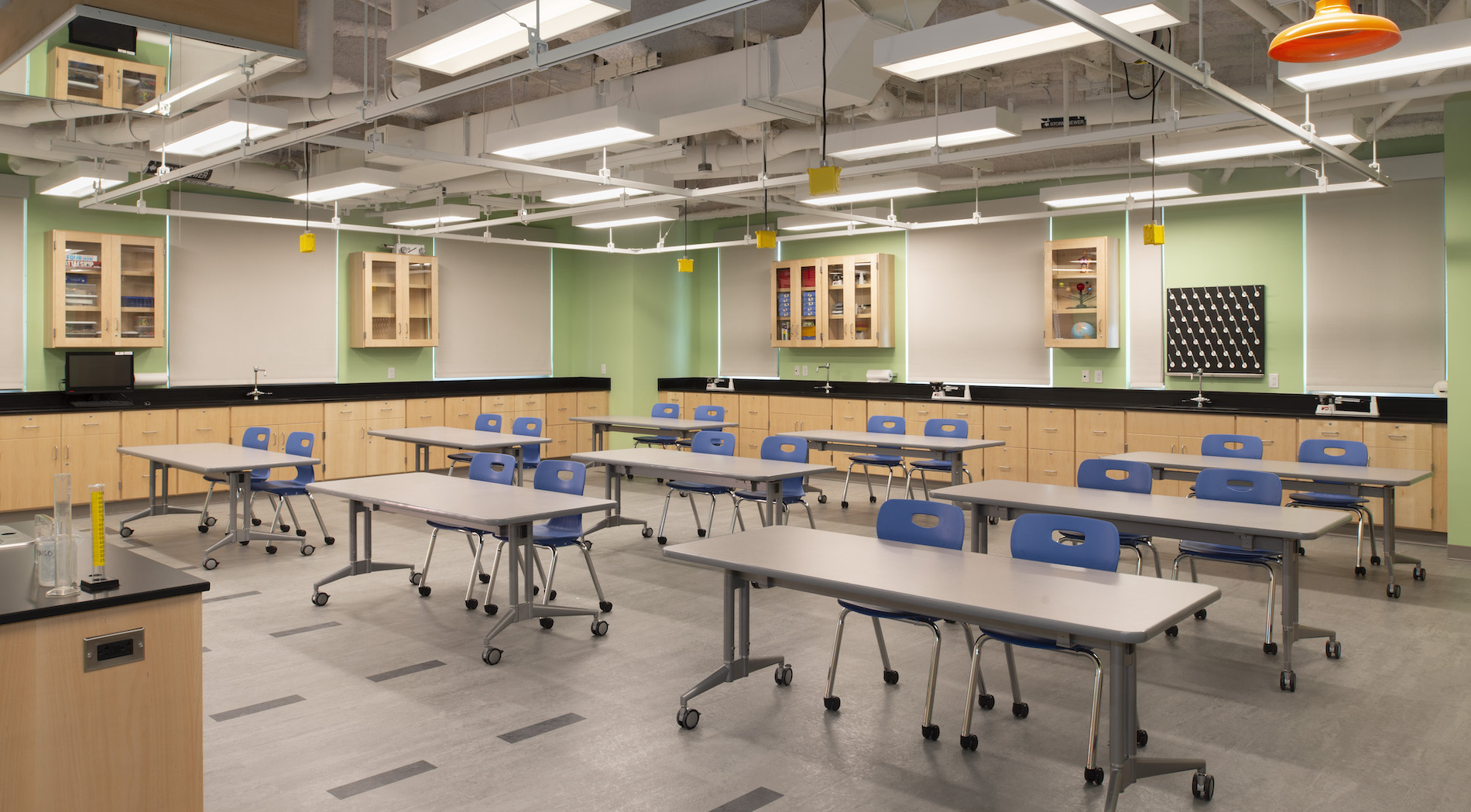McCoy Rockford
From higher education institutions to K-12 and charter schools, educators are striving to mirror life off campus with entrepreneurial-inspired educational design. By creating a real and relevant environment in areas such as business, lab sciences and technology, educators help their students accelerate their learning process for continued application, rather than simply mastering coursework. Many schools find that students develop a sense of confidence and concept retention that can later successfully transition them into the professional world.
Swiss Educators Encourage K-12 Students to “Get Down to Business”
Captured by a Steelcase insight article, the Institut International de Lancy (IIL) in Geneva, Switzerland modeled their school renovation after a business start-up, completely flipping the traditional classroom model on it’s head. Standard desks and chairs were replaced with mobile furniture so students could easily reconfigure their learning space with their peers to practice collaboration, critical thinking and technology application. Just as a small business would typically occupy a less-traditional space in order to remain dynamic and adaptable, minimalist classrooms that offer enhanced flexibility allow the subject matter to evolve fluidly and often as students’ minds expand.
As the first Apple Distinguished School in Switzerland, IIL also provided each student with their own mobile device to participate in technology-structured lessons that strengthen digital literacy and real-world business applications across subject matter. Instructors allow students to lead the classroom discussion as their ideas transform with the use of technology. Members of the class establish leadership roles just as they would in a business-oriented setting with students naturally contributing to the conversation as leaders, analysts, researchers, innovators, and active doers.
In between classes and activities students are encouraged to work, study and seek respite in dynamic spaces that include varying seating, sitting and standing tables, private quiet spaces and communal lounge spaces. ILL expresses that “learning is fluid” in the real world, and the school tries to emulate that with a variety of environments that students can choose based on their mood, learning style, focus preferences and other individual variables. The school reports that their newly renovated design is well-received and that students can’t wait to continue learning.
Higher Education Libraries More Appropriately Named, “Learning Commons”
It is becoming more and more common for today’s libraries to provide more than just books and archives, with many campuses offering amenities like cafes, movie and theater rooms, technology and audio labs, and even makerspaces. Smith System is one of our top partners in designing these creative spaces and calls them, “incubators for problem-solving and collaboration.” You can read more about their process and products for outfitting makerspaces here.
Campus libraries today even frequently practice service models to encourage student experts to train their peers on things like resume writing, foreign languages, business development, and the arts. An article by Steelcase identifies higher education learning commons that offer student-to-student writing consultation services, student library assistants and student aides for freshmen in special programs.
Different types of seating and tables throughout new study spaces compliment how students prefer to focus, interact, collaborate, socialize, and even rest. Different levels and types of privacy – visual, acoustical and territorial — help individuals be more productive and feel at ease. All of these different elements mimic those of a modern corporate setting and help students transition their academic study habits into everyday working tasks in the professional world.
McCoy Rockford’s Picks for Real World Design
- Thread by Steelcase – These sleek, inconspicuous, free-standing power adapters provide ample power for student devices so they never experience a lapse in learning.
- Smith System – Planner® Studio – 30″ Deep Trespa® – This lab table with a ½” thick work surface is resistant to a large number of aggressive chemicals, making your lab or makerspace able to withstand even the most – well, ambitious
- Norva Nivel – CONCLAVE NNCG09 – With dynamic seating and a whiteboard-style tabletop, this seating setup is perfect for technology-based learning in a 21st century environment.
To learn more about how McCoy Rockford can help you transform your academic spaces, visit McCoyRockford.com or call us in Houston or Austin to tour our showrooms.

